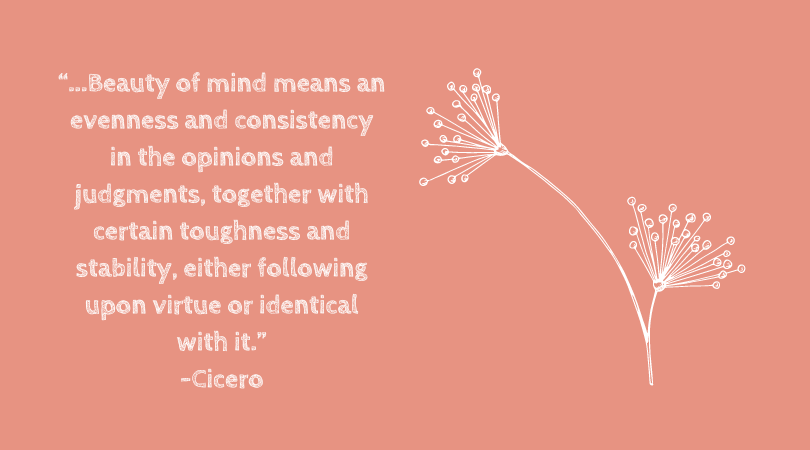The first part of the talk will be looking at what is moral beauty. We'll start with the ancient Stoics and we will fast forward about 1600 years to the Earl of Shaftesbury in England. Then we'll come up to contemporary times. How can we approach moral beauty? What does it mean for us today? And then the second segment of the talk will be some suggestions for how we can cultivate moral beauty today and make our lives more beautiful.
|
This guest post is a transcription of my friend Brittany Polat's talk at Stoicon 2023. It was previously published on Brittany's Substack, Stoicism for Humans, and includes the themes of virtue, moral progress, and Shaftesbury’s views on beauty and nature. I hope you find this very inspirational topic useful in your own life.
The first part of the talk will be looking at what is moral beauty. We'll start with the ancient Stoics and we will fast forward about 1600 years to the Earl of Shaftesbury in England. Then we'll come up to contemporary times. How can we approach moral beauty? What does it mean for us today? And then the second segment of the talk will be some suggestions for how we can cultivate moral beauty today and make our lives more beautiful.
2 Comments
As we approach the Winter Solstice and Christmas Day, my thoughts often turn to the beauty and majesty of the natural world.
The last several years have seen a spate of books published about living a life closer to nature. They range in topic from how spending time in nature improves our health, enriches our lives and our children's lives, provides us with a sense of beauty and transcendence, deepens faith, improves creativity, and much more. I have created a list of my favorite books from this genre that I hope you enjoy this holiday season: In this engaging conversation, David Fideler and I delve into the rich history of ancient Greek philosophy to explore the concept of beauty as an objective quality of nature.
We discuss the ideas of Pythagoras, Plato, and the Stoics, and the ideas they held about beauty. In this highly illustrated video, we also explore the importance of harmony and proportion in nature and art, and how they were used to enhance beauty in ancient architecture and Renaissance paintings. The conversation also touches on the connections between beauty, truth, and goodness, and the timeless wisdom of ancient philosophy that can still inspire us today. Links: https://livingideasjournal.com/ https://therenaissanceprogram.com/the-renaissance-program-in-florence-italy/ Support Common Sense Ethics to see more videos like this: Paypal | Patreon | Kofi In 1962, French philosopher René Guénon suggested that we live in "degenerate times", at the end of a long age during which important spiritual truths have been forgotten, ancient centers of wisdom have been destroyed and the guardians of that wisdom dispersed.
In my opinion, many modern people are hurting from a lack of beauty, meaning and wisdom in their lives. I myself sometimes get stuck in the cultural doldrums and begin to forget what is important. Beautiful things lift the spirit. Meaning gives our lives true purpose. Wisdom helps us to live well. Our current situation is not always helped by popular culture, which with some exceptions, isn't particularly beautiful, meaningful or wise. If we want independence from the toxic values of popular culture, there are things we can do to counterbalance those toxic values. Here are 5 suggestions for counterbalancing today's barren cultural landscape: |
Don't Miss A Post!Sign up to receive updates and special announcements! Thank You For Subscribing to Common Sense Ethics!You have successfully joined my email list. About Me:Thank you for your interest in Common Sense Ethics! I'm Leah, a librarian and freelance editor with a background in history and philosophy.
Most Popular Blog Posts:3 Unpopular (But Likely Correct) Opinions According to Cicero Download My Stoic Printables For Tough Days:
Watch Common Sense Ethics On YouTube:
|












